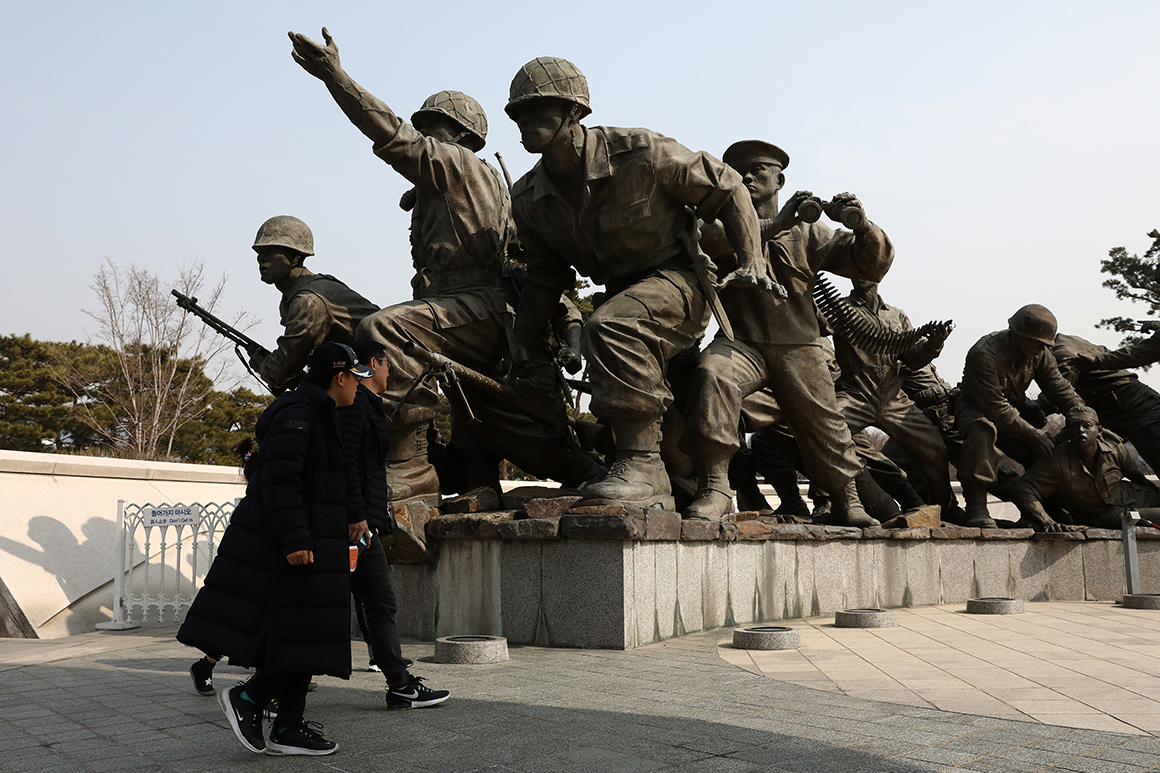
„It gives you chills to think about it,“ he added.
The remains came from a series of boxes that North Korea turned over, mostly recently in 2018. They were identified by the DPAA lab and scientists from South Korea’s Ministry of National Defense Agency for KIA Recovery and Identification.
„In some cases, [the South Koreans] have very, very compelling DNA matches already,“ said lab director John Byrd.
So far, 62 Americans have also been identified from the sets of remains from North Korea. „We’re confident that it will be more,“ Byrd said.
As of Friday, 7,582 U.S. troops were still listed as missing from the conflict.
Overall, the Pentagon agency is tracking more than 82,000 U.S. military personnel from World War II, Korea, the Vietnam War, the Cold War and other modern conflicts.
Some of its biggest projects include identifying the 388 sailors who were killed aboard the USS Oklahoma when it was sunk in the Japanese attack on Pearl Harbor in 1941; Marines recovered from the island of Tarawa in the Pacific or exhumed from unknown graves in the National Memorial Cemetery of the Pacific in Hawaii where they were buried after the 1943 battle; and field work at the Cabanatuan prisoner of war camp in the Philippines, where more than 1,000 American military and civilian personnel were executed and buried in mass graves in World War II.
But the cases that present some of the biggest challenges — logistically, scientifically and politically — are from the Korean War, where thousands of American and allied troops fighting under the United Nations were lost in large land battles in what is now communist North Korea, which remains closed off to search teams.
„A lot of them were captured and marched all the way up to North Korea,“ said Jennie Jin, a forensic anthropologist who leads the Pentagon’s Korean War identification project. „So to me that’s the real challenge because the record is not very good. So we have very limited sources.“
American search teams have not been to North Korea since 2005 and the agency is eager to return because the vast majority of Americans missing from the conflict were lost there.
„We’ve got a request with the North Koreans to go back out there,“ Banaji said. „Until the political climate changes, we don’t expect to but we’re prepared, our team is ready to go.“
Tuesday’s repatriation ceremony for the fallen South Korean soldiers will be presided over by Navy Adm. Philip Davidson, commander of U.S. Indo-Pacific Command, and Jae Min Park, vice minister of defense of the Republic of Korea. An arrival ceremony is scheduled for Thursday in South Korea.
The U.S. last returned 64 sets of South Korean remains on Sept. 27, 2018.
While the Pentagon lab is still identifying remains of some lost Americans from other conflicts, the agency has not yet resumed field operations due to the coronavirus pandemic.
„We stopped field operations in March of this year and my goal is that as soon as some limitations lift, countries allow access, and we have the right medical care we will start deploying out there,“ Banaji said. „My hope is sometime in the next few months — late summer, early fall — we will get missions back out the door.“
Source: politico.com
See more here: news365.stream






